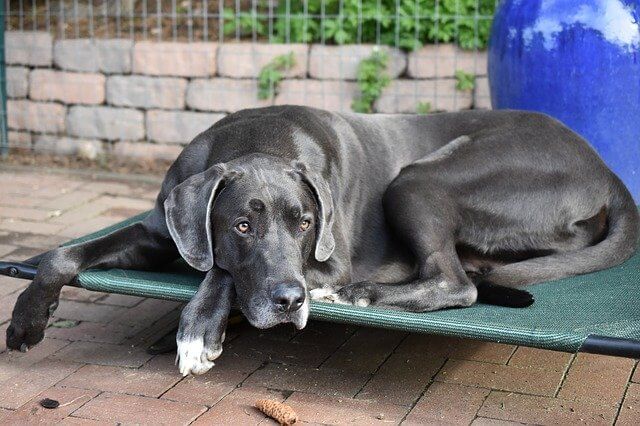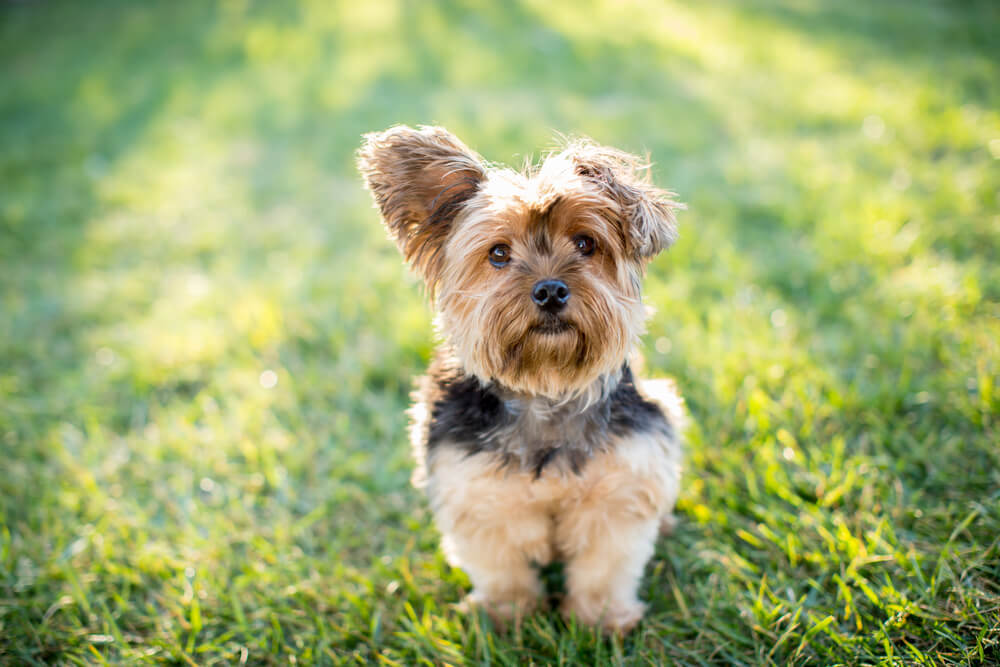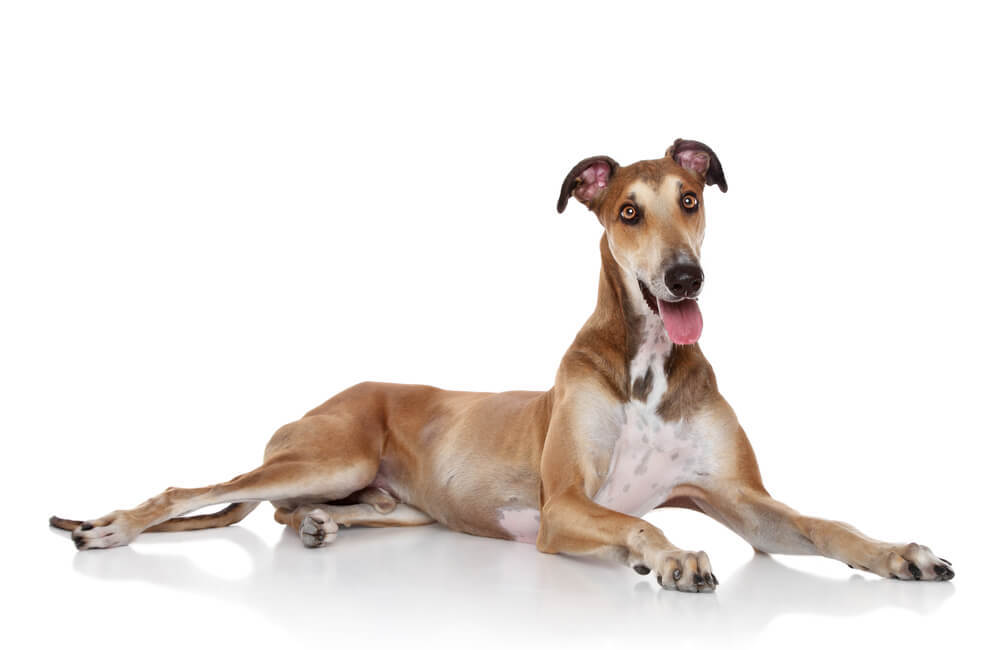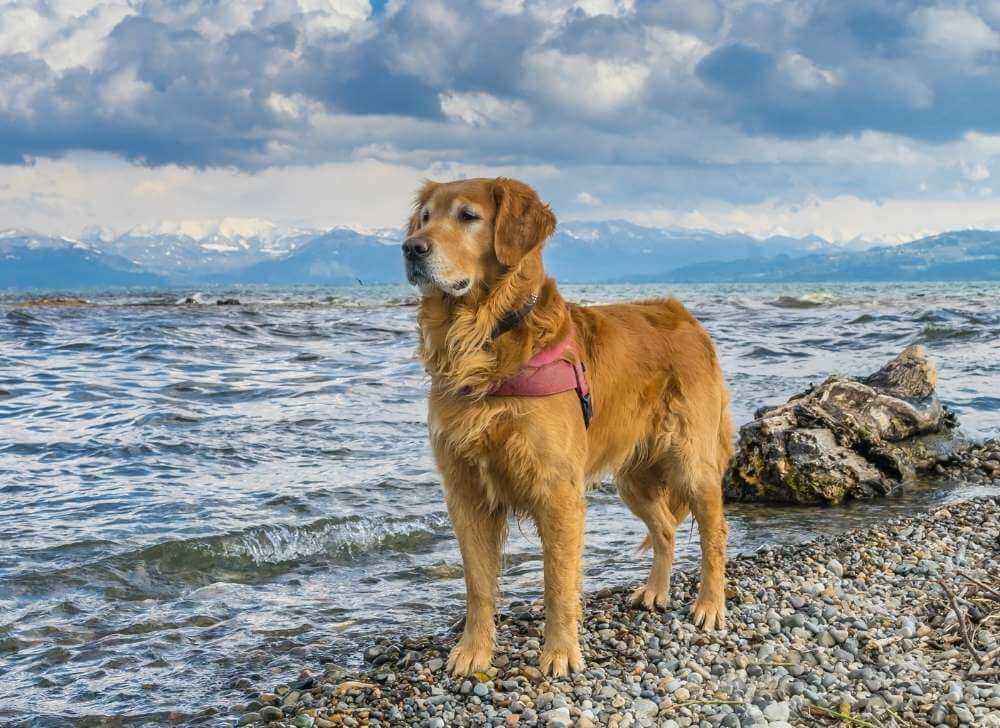Are you worried about the damage a hot climate can do to dogs? Trying to find breeds that will do well in a warm climate?
In this piece, we are going to review no less than the 13 best, most well-suited dog breeds to live in hot or generally warmer climates. Ideally, short-haired, single-coat or no-hair dog breeds are great for warm regions. But there’s more to it.
Tropical temperatures bring a host of pet-related issues, but dogs that have certain unique qualities can be your best friends in these places. Another factor that helps some breeds is the nose length. Generally speaking, longer snouts aid in processing warmer air better by cooling it down before it’s breathed in.
What is Heatstroke in Dogs?
Before we move on to the 13 dog breeds that are best for tropical temperatures, we need to understand the exact problem. Let’s first take a look as to what is heat stroke in dogs.
Hyperthermia or increased body temperatures can be fatal for dogs. A body temperature above 105.8°F (41°C) is considered to be abnormal and can result in damage to the body in various ways.
Heat stroke occurs from failure of thermoregulation. According to VCA Animal Hospitals, the critical temperature where multiple organ damage and impending death occurs is around 107°F to 109°F (41.2°C to 42.7°C).
Signs of heatstroke in dogs can include any combination of the following: excessive panting, hypersalivation, listlessness, muscle tremors, vomiting, diarrhea, ataxia, collapse, loss of consciousness and seizures.
Dogs susceptible to heat stroke include: senior dogs, obese dogs, large breeds, breeds with excessive thick hair coats and brachycephalic breeds.
Why is Heat So Dangerous to Dogs?
Dogs can only cool off in a couple of ways – panting and blood vessel expansion.
Panting allows dogs to naturally evaporate moisture from areas such as the lung lining, nasal passage, and the tongue. This happens when warmer air passes through moist areas to cool down.
Blood vessel expansion (or vasodilation) is a process by which dogs are known to expand their ear and facial muscles, making warmer blood reach closer to the surface and cool down.
With only two ways out, high heat can be pretty difficult to manage for dogs. Many other mammals including humans sweat to dissipate heat. Dogs cannot dissipate heat fast enough with panting and blood vessel expansion if the temperatures are too high.
Dog paws actually do sweat – but that’s mostly insufficient in hot climates.
Bonus Tip: Acclimate dogs to warm temperatures for up to 2 months.
How Hot Is Too Hot for a Dog?
Though a heatstroke is classified as a body temperature of over 105°F, a temperature above 100°F can easily be too hot for a dog to manage, especially if it’s long haired, out of shape, short-nosed, etc.
The Humane Society of the United States explains [2] that as dogs deal with heat differently than humans do, typical measures like fans are unlikely to be effective. So, even if you think that your dog is being cooled off, it might be overheating internally. Don’t wait for the temperature to be too hot for you. It’s too hot for dogs way before it’s too hot for us.
Never leave dogs alone in closed vehicles.
Characteristics that Make a Dog Good for Hot Temperatures
Certain characteristics make a dog good for hot temperatures. Some are breed-specific while others can be influenced by their owners.
Breed-specific Characteristics
Lifestyle/Owner-Controlled Characteristics
Exercise dogs only during cooler periods of the day.
13 Best Dogs for Hot Weather
With all that out of the way, let’s check the 13 breeds of dogs that are remarkable for their abilities to adjust to and even live comfortably in a hot climate or high temperatures. These canines might even enjoy the heat – thriving in the presence of the sun.
Note that the list is in no particular order. The specialties of each breed are mentioned and some might be more preferable for you than others.
1. Chihuahuas

Originally from the Mexican desert, these pocket-sized dogs have a thin coat which makes them an excellent choice for tropical climates. Their petite size does not protect against the cold, and that’s why they thrive in hotter places and during the summer months.
2. German Shorthaired Pointer
Known for their versatility, German shorthaired pointers are adept in tracking, pointing, hunting, pulling sleds, and even detecting bombs. Their stone-hard gaze with a lifted paw is perhaps the most well-known of pointing stances in all dogs. Their water-resistant coat is short and allows them to repel heat.
3. Australian Cattle Dogs
A short double-coat keeps the Australian cattle dog pleasantly active even in the hottest climates. These dogs are known to work actively during the hottest hours and aid in herding livestock.
4. American Water Spaniels

Get my good side 📸
The American water spaniel is a pooch that thrives in warmer climates. Their wavy coat with curls protects them against the excesses of weather.
5. Ibizan Hound
The Ibizan hound is highly athletic and originally from the Spanish coastline. The Ibizan hound is apt for hot climates as it was bred for sprinting and hunting under the full sun. They likely come from the Egyptian hounds – hounds from a place known for its especially hot climate. Ibizan hounds have very short and coarse smooth hair that can sometimes be wiry.
6. Great Danes

Afternoon adventures in da sunny shine ☀
Somewhat lazy and always the one to initiate a snuggle, Great Danes are popularly known to sit next to fireplaces or heater vents. They just love the heat. Great Danes love heat so much that owners often spot them enjoying a full sprawl in the sun when it is above 90 degrees out! There is more to a Great Dane than its intimidating size, lean muscles, and rectangular head. They live up to their silent giant reputation by conserving energy – which is a great trait to avoid overexertion and consequently, overheating.
7. Yorkshire Terriers

Yorkie – Sun Aficionado 🌞🦗
The Yorkshire Terrier might be predominantly known for its cuteness, but this little companion has a long silky coat with a thin texture, which makes it great for handling higher temperatures. This single-coat terrier has hair and not fur. Yorkies have comparatively poor insulation against the cold.
8. Airedale Terriers
The largest of the terriers, Airedale Terriers tolerate warm weather surprisingly well. Their short and wiry hair can be further trimmed to better combat the heat. They also have no undercoat, which helps some of the body heat to escape.
9. Greyhounds

That Posture Dreams Are Made Of✨
This sprinter loves warm weather. The thin coat, lean body mass, and short hair all help the greyhound to respond significantly well to increasing temperatures. Greyhounds also don’t require a ton of exercising or activity to remain fit, which helps them avoid overexertion. Coincidentally, after racing, greyhounds can momentarily have rectal temperatures as high as 107.6°F (42°C) without showing signs of heatstroke.
10. Xoloitzcuintli
The Mexican hairless dogs also handle heat well, having developed in the extremes of temperature. A coated Xoloitzcuintli also handles heat better than most other dog breeds.
11. Golden Retrievers

Baywatch – Retriever Style 🌊🕷
Golden retrievers love the water – so if you have a water body around your home, they have another means to cool off. Smart and social, golden retrievers have a great tool to fight heat as long as there’s water for them (a pond or lake is best, but if not, a tub of water specifically meant for your golden retriever can also suffice).
12. Italian Greyhounds
Slender, short-coated, and low-fat – Italian greyhounds love the sun and the heat. Much like their larger cousins, Italian greyhounds also have multiple traits that help them dissipate heat faster.
13. Afghan Hound
Developed in the hot climate of Afghanistan, these hounds have a single coat of hair in the form of locks. Daily coat grooming is recommended for the Afghan hound. They also handle the colder desert nights well apart from the high noon temperatures.
Worst Dog Breeds for Hot Weather
Though a heatstroke can occur in any dog, the breed does influence a dog’s capability to tolerate higher temperatures. Generally speaking, longhaired dogs and short-snouted dogs (called brachycephalic or flat-faced – because of their limited ability to thermoregulate as a result of partial upper airway obstruction) are prone to a heatstroke more often than other breeds. Also, dogs known to live in and thrive in colder, snowy climates are definitely not recommended for hot climates.
Here are the dog breeds that respond most poorly to high temperatures or tropical climates:


